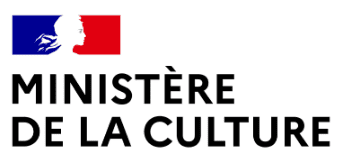With Sobre las nubes (FID 2022), Maria Aparicio offered us a gentle, melancholic drift through lonely, dull lives, to the slow rhythm of the clouds in the title. Las cosas indefinidas, like an additional chapter, focuses on Eva, film editor, and her discussions with her assistant Rami. Together, they are editing a film about blind people, which was begun by a friend who, as we learn at the start of the movie, has just died. Attentive and precise, Maria Aparicio’s camera follows Eva, with fixed frames watchful of the slightest bodily movement, the slightest hesitation, the most tenuous silence, or allowing the spoken word to unfold before the camera, as in the monologue that is, in a way, addressed to her. This, like Eva’s attention to the images in her friend’s film, is about taking care of everyone: the faces, the words heard, the people. Images and films seem to provide shelter for this care. However, this kind of reception is ambivalent, as the bouquets to which Eva attaches so much importance suggest – not only do the flowers bring back memories but they also remind us that her friend is gone. Between perspective and impression, memory and loss, the film sets out to create a movement from the inside out. This is a delicate ode to the attention paid to people doing undefined things, to use the expression borrowed from Robert Bresson that gives the film its title. (Nicolas Feodoroff)
- Ciné + competition | International Competition
- 2023
-
 Ciné + competition
Ciné + competition
-
 International Competition
International Competition
- 2023
LAS COSAS INDEFINIDAS
UNDEFINED THINGS
María Aparicio
Last year we discovered SOBRE LAS NUBES, a choral film that focused on the work and lives of few characters. Here, you focus on only one character, Eva. How did this project come about?
Las cosas indefinidas has three different origins. For many years I have been interested in digitization as a social, technological and historical phenomenon; and more particularly, the digitization of images and the new uses and circulations that arise from that. And even more particularly, the digitization of cinema in terms of how it changed the way films are made and also their circulation. I had the intention of ever being able to transfer these ideas into a film, but it was very difficult for me to find a way to move away from a research format, from a study, from a classic documentary approach. Even so, these concerns were permanently present.
And in 2019 a close friend with whom I worked passed away. The days before his death we were editing a short film of his and, just like Eva’s character, after he died I realized that in my house there was a hard drive of his left. That hard drive had mainly materials from that short film but also other personal files of his. It was strange for me to hold that disk in my hand knowing that there were files of great emotional value on it, but that it was ultimately just a device. Everything in there exists in terms of 0’s and 1’s but there is nothing resembling matter or physical presence. So I thought there was a point at which those questions about the digitization of images could be connected to the idea of death. Without any intention of making a link with those theories about the death of cinema in which I don’t believe at all, I thought that when we talk about digitalization or death, we are facing an existential discussion.
And finally, the third origin of this film has to do with Covid. We were very close to filming the last stage of Sobre las nubes and we had to stop because of the arrival of the pandemic. In that first period of strict quarantine, I think we all wondered how we were going to be able to film if we couldn’t be close to others. So I started to think about how I could make a film with the minimum and indispensable and that’s when I delimited these characters, Eva and Rami. Both are two people very close to me, Eva is a great friend and Rami is my partner. Eva’s house in the fiction is my lifelong home, Vera is my dog, and so I configured a very small fiction that can be filmed with very few people, delimiting this character who is going through a mourning and who dedicates her life to one of the tasks that is most closely linked to the materiality of the images, which is film editing. Finally the shooting of Sobre las nubes was resumed and Las cosas indefinidas was postponed for several months. When we resumed it, with the pandemic somewhat overcome, the film grew a little, but these origins were always present.
It’s also about cinema and editing. What interested you in focusing on this issue?
Film editing discussions have taught me a lot. I always find them fascinating instances because of their complexity and delicacy. They are moments of much dialogue, of many questions, of many hypotheses. The decisions made there are an act of faith, that’s why it’s a moment that particularly interests me. And the idea of transferring these concerns about images and digitalization to a film became clear to me when I was able to find a fictional story, and that happened when I thought of this character who works with film images and who has lived the transition from film to digital cinema with her profession being transformed from beginning to end. That allowed me to raise some of these concerns not from theoretical or expository issues but through a narrative.
There are many discussions across the film, mainly between Eva and her editor Rami. Could one consider some of them more as some inner monologues?
I’m interested in fiction having some rarefied moments, and in this case I took the liberty of incorporating texts that, when pronounced by the character, move away from a more realistic rhetoric. I liked that Eva could have moments where the extension of the text and the way the camera frames her could generate that strangeness. Also, both Eva and Rami are great conversationalists and although they had never shared an acting process (Ramiro is not in fact an actor) I was confident that we could find a way to link them dialectically and cinematographically.
On the other hand, I was interested in the question of how to film the sadness of a character, how to build that critical moment she goes through and how to generate situations where there could be a dialogue about it. In that sense, I think that besides being a film that works on death and cinema, it also ended up being a film about friendship.
The film to be made is a documentary about blind people, about seeing and the invisible. How did it come out? The use of the analogic images?
Another thing I really liked about the protagonist being an editor was the possibility of seeing the material she was working on, as if that fictional device we invented was a door that allowed us to go in and out to a second film. So we had to think of two different films, on the one hand the one that contains Eva and Rami and on the other hand, the film that Eva and Rami edit. It helps me sometimes to think in opposites when I’m trying to come up with an idea. So when I was thinking about all these concerns about the materiality of images and digitization, I inevitably came to the idea of blindness as an absolute opposite in a discussion that is about purely visual issues. So I thought that maybe the film that Eva and Rami edit might have to do with that, with people with blindness talking about their lives, their dreams, their tastes, their imaginations about the world. So we interviewed several of them and based on those interviews we built a kind of enumeration of images that we then shot in super 8mm. The decision to shoot in this format was related to trying to find a formal correlate to what they describe, and to that manner of experiencing the world in a very different way from that of the sighted. It is not a matter of thinking absolutely about the absence of the visual, because although there are no images, there are visual ideas in what they say.
I think that using the hazy, rough, undefined image of the super 8 to accompany their words was a bit of an obvious way to go. An interesting challenge would be to be able to talk about blindness from maximum sharpness.
The flowers play a central role.
My parents always bought jasmines in the pedestrian street of Córdoba from street vendors and I have the memory of flowers in my house ever since. The first time I paid attention to flowers in cinema was in Kaurismaki’s films. In his shots I realized that they had a special presence, and from that moment on flowers were never the same for me. In turn, when I accepted that one of the axes of Las cosas indefinidas was related to death, I thought that flowers condensed the idea of a perishable beauty, and that they are used to pay homage to death and life in equal measure: either in the graves of cemeteries or in the bouquet of flowers given to someone on a special occasion. Thus, the same flowers have one meaning at the beginning of the film and a different one at the end.
How did you conceive the presence of the music?
Simply because a friend shared with me the songs of Miguel Saravia, an Argentine singer from the 60’s that I liked very much. His songs reminded me a lot of a somewhat self-absorbed feeling and when I wrote the script of the film I thought of the final shot based on that song. Then in the editing with Ramiro we incorporated another Saravia’s song in the first scene and we never modified it again, it was edited that way from the first time. And there is also Guadalupe Gomez’s music that appears in the bar scene. I was interested in the characters deciding to go to that bar almost by chance and there they would find a song that seemed to be speaking directly to them.
Interviewed by Nicolas Feodoroff
-
 Ciné + competition
Ciné + competition
-
 International Competition
International Competition
Technical sheet
Argentina / 2023 / 80’
Rights holders
María Aparicio
maru.aparicio@hotmail.com
Ana Apontes
anettapontes@gmail.com
- Autres films / Ciné + competition, International Competition






